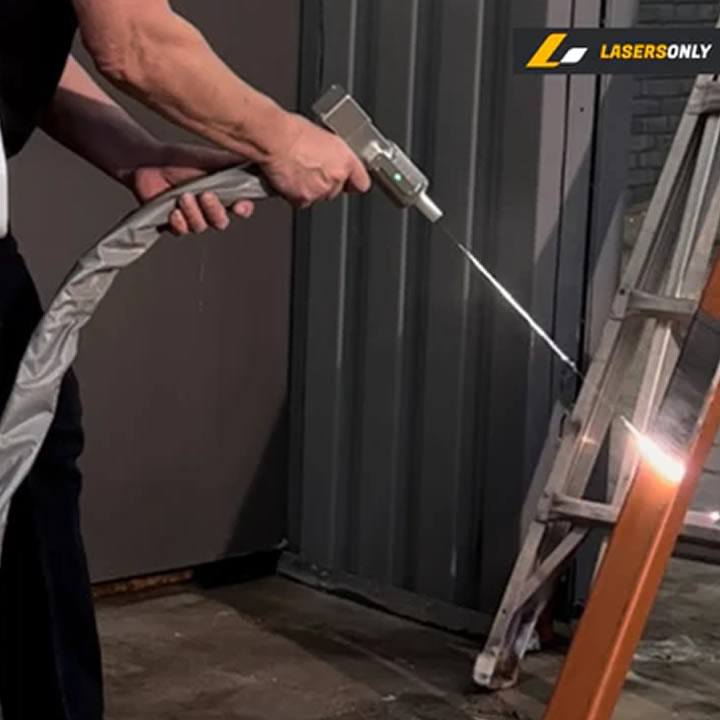In an era where technological advancements continue redefining manufacturing standards, corrosion remains a persistent challenge.
Corrosion, the gradual destruction of materials by chemical reactions with their environment, causes global financial losses across various sectors. Traditional methods to combat this issue have ranged from mechanical scraping to chemical treatments, each with drawbacks.
However, a groundbreaking solution has emerged on the horizon—laser cleaning technology. This article explores how laser cleaning revolutionizes the fight against corrosion, enhancing longevity and efficiency in industrial operations.
Understanding Corrosion and Its Economic Impact
Corrosion affects almost every aspect of the industrial world, from bridges and vehicles to pipelines and factory machinery. The World Corrosion Organization estimates that the global cost of corrosion is over $2.5 trillion, representing about 3.4% of the worldwide GDP.
These costs are often a result of direct damage, maintenance, repair, and premature replacement of structures and equipment. Additionally, corrosion can lead to catastrophic failures, posing risks to safety and the environment.
Traditional Methods of Corrosion Prevention
Historically, industries have employed various methods to prevent and control corrosion. These include cathodic protection, coatings, and rust inhibitors. Each technique, while effective to a degree, comes with limitations.
Coatings can degrade or be damaged, exposing surfaces to corrosive elements. Chemical inhibitors often require frequent reapplication and can be environmentally harmful.
Introduction to Laser Cleaning Technology
Laser cleaning technology offers a promising alternative. Utilizing high-energy laser beams removes unwanted materials from a surface without physical contact, minimizing damage to the underlying material.
The laser beam targets the unwanted layer—rust, paint, or contaminants—and rapidly heats it, causing it to vaporize or peel away. This process, known as ablation, leaves the base material intact and clean.
Advantages of Laser Cleaning over Traditional Methods
The precision and efficiency of laser cleaning provide significant advantages over conventional methods. One of the primary benefits is its non-abrasive nature, which prevents wear and tear on the base material, a common issue with mechanical cleaning methods.
Furthermore, this rust removal does not involve harsh chemicals, making it a safer and more environmentally friendly option. It also reduces waste and cleanup costs since it generates no secondary pollutants such as used grit media or solvent waste.
Laser Cleaning in Preventing Corrosion
Laser cleaning is particularly effective in preventing corrosion because it can precisely remove oxides, oils, and other contaminants that can lead to corrosion if left unchecked.
For example, laser cleaning can remove rust and prepare metal surfaces for protective coatings in industries like shipping and automotive, thereby extending their life.
Case Studies of Laser Cleaning in Action
Several industries have successfully integrated laser cleaning to enhance maintenance and manufacturing processes. In the automotive sector, laser cleaning treats car bodies before painting, ensuring that the paint adheres properly and lasts longer.
In maritime operations, ships’ hulls are cleaned with lasers to remove marine growth and corrosion, significantly reducing the risk of metal fatigue and structural failures.
The Role of Laser Cleaning in Sustainability
Sustainability is becoming increasingly important in industrial operations, and laser cleaning aligns well with this trend. Laser cleaning helps companies meet stricter environmental regulations and corporate sustainability goals by eliminating the need for chemicals and reducing waste.
Moreover, the increased lifespan of materials treated with laser technology contributes to a reduction in resource consumption and waste generation.
The Future of Laser Cleaning Technology
The future of laser cleaning looks promising as ongoing research and development enhance its capabilities and reduce costs. Innovations in laser technology, such as developing more compact and energy-efficient systems, are making it accessible to a broader range of industries.
Additionally, advancements in robotics and automation integrate laser cleaning into production lines, further improving efficiency and effectiveness.
Challenges and Considerations
Despite its many benefits, laser cleaning is challenging.
The initial cost of laser cleaning equipment can be high, which might deter smaller operations from adopting this technology. Operating laser systems also requires a learning curve, requiring specialized personnel training.
Expanding the Scope of Laser Cleaning
As laser technology continues to evolve, its applications are expanding beyond just cleaning. It is now being explored for use in surface texturing, where lasers can modify the surface properties of a material to make it more resistant to corrosion or wear.
This technique can be particularly beneficial in industries like aerospace and biomedical, where material performance is critical.
Global Adoption and Regulation
Various factors, including regulatory standards and economic incentives, influence the global adoption of laser cleaning. Due to their minimal environmental impact, laser cleaning technologies are quickly becoming the norm in regions with stringent environmental laws.
Meanwhile, countries providing economic incentives for cleaner production technologies are seeing faster adoption rates among industries.
Conclusion
Laser cleaning technology is set to play a crucial role in the industry’s future, offering a powerful tool in the battle against corrosion.
With its ability to efficiently remove contaminants and prepare surfaces for protective treatments, laser technology enhances the longevity of industrial assets and supports sustainable practices.
As industries seek more effective and environmentally friendly solutions, laser cleaning is poised to become a standard in corrosion prevention strategies. This technological evolution marks a significant step forward in our ongoing quest to safeguard our industrial infrastructure from the ravages of corrosion.

